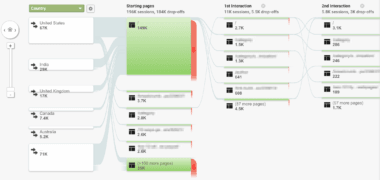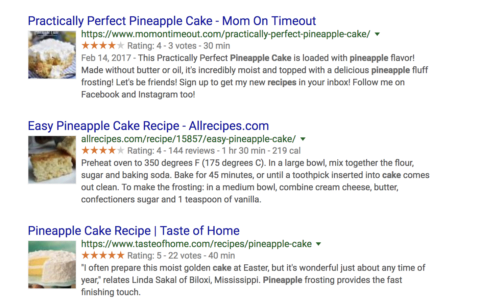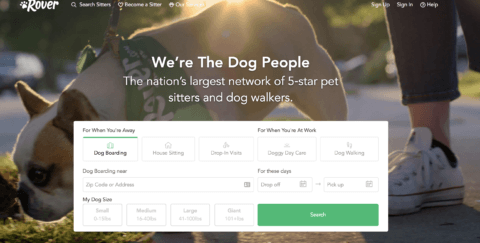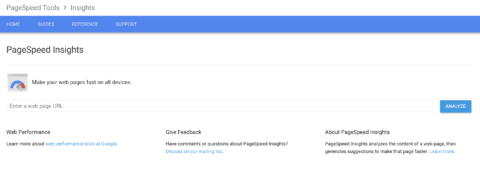
04 Dec Top 7 Ranking Signals that REALLY Matters in 2018?
Every year it seems Google gives us a new ranking factor.
In 2014, HTTPS became a ranking signal.
In 2015, mobile usability became a ranking signal.
Then, 2016 shifted content development as RankBrain came onto the scene.
And, in 2017, there was a more significant push for more HTTPS websites.
Now, in 2018, mobile page speed looks to be the next big ranking factor to focus on.
All that said, John Mueller assures us that “awesomeness” is the key to ranking in Google.
But, with over 1 billion websites online today, how do you create awesomeness?
One thing I know for sure is that all of these ranking factors are all shaped to create a better, more awesome user experience.
With Google evaluating sites based on hundreds of ranking factors, knowing where to aim your SEO strategy in 2018 for the biggest bang might seem impossible.
But good news: Ranking signals are going to continue to adapt to the user.
This means that new SEO trends already surviving have roots in the current algorithm — and with a little creativity and SEO savvy, it’s entirely possible for you to rank well in 2018.
While ranking signals are far from limited to just seven, the factors highlighted in this post are ones I consider to be the most important for this year.
Here are the ranking factors that will really matter in 2018, and why.
1. Publish High-Quality Content
“I don’t need quality content on my website to rank,” said no one ever.
The quality of your website and blog content is still crucial for 2018. Content still reigns as king.
As Rand Fishkin pointed out in a Whiteboard Friday, content that is optimized for keywords still holds valuable SEO power.
Your content needs to provide valuable information. Creating pages with no real value can come back to haunt you, thanks to Google’s Panda and Fred algorithm updates.
Pages like this portal site.

Or, this.

Even big names like eBay and Apple aren’t worthy of the content crown. Thin content hurt both brands.
High-quality content is about creating pages that increase time on page, lower bounce rate, and provide helpful content for the user.
Blog pages like this and guides like this are the type of high-quality content search engines, and users want.
High-quality content pages must do more for today’s SEO than just be well-written and long-form. They also have to cover the following areas to increase their presence in SERPs:
Search Intent
Knowing users’ search intent is essential to creating pages that drive organic traffic.
CoSchedule saw a 594 percent increase in traffic by reshaping their SEO content strategy to be more aligned with searcher intent.
And, Google has even updated the search results with a new featured snippet that is designed for “multi intent” queries.
To understand what your target searchers intent is, you need to dive into your Google Analytics to see what users are looking for.
Reports like Site Search and User Flow can give you an idea of what your customers are searching for.

You can also view Search Analytics report in Google Search Console. This report will give you insights into what people are clicking on the SERPs to get to your site.
Keyword Research
Despite the word on the street that keyword research is not needed to rank, keyword research still supports quality content creation. Unlike traditional keyword research, today, keywords serve as a content creation roadmap.
Through competitor research and data mining, you can uncover keyword gems that have average search volume, but a high click-through rate for your audience.
Check out how Chris Hornack, founder of Blog Hands, saw an 80 percent increase in traffic after performing keyword research.
So, as the industry continues to whisper about the negative impact of keyword research, you need to identify your primary keywords and bucket them into topics suited for your searcher.
For instance, a Google study found that mobile search queries such as “brands like” and “stores like” have increased by 60 percent over the past two years. This study explains the need to adapt your keyword strategy for the mobile consumer.
Andrea Lehr, Brand Relationship Strategist at Fractl, shares insights on how she buckets her keywords here.
Voice Search
According to Google, 72 percent of people who own a voice-activated speaker say that their devices are often used as part of their daily routine.
It’s evident that since the growth of AI assistants like Siri, Alexa, and Cortona, a new way of searching is coming.
Optimizing for the way people speak can feel like going to your first yoga class.
You’re looking around at what other people are doing, trying to breathe deeply while holding your lotus cup above your head, meanwhile, you’re just waiting for savasana. #Awkward.
I get it. And, Dawn Anderson does too. She offers some awesome tips on SEO for voice search, including thinking about how people ask questions and understanding local queries and intent.
And, Brian Dean recently shared his insights into optimizing for voice search after reviewing 10,000 Google Home results.
Rich Snippets
Rich snippets use schema to markup your text and data for better visibility in Google search results.
Rich snippets could mean photos or ratings on your result (which is standard for recipes) like this.

Rich snippets can increase your click-through rate and lower your bounce rate because it gives users more of a preview of your content before they click on it.
If SERPs are the front door to your business, your content pages are the interior, showing users that your website (and therefore, your products or services) are worth their time.
By building high-quality content for your website, you create a warm and inviting place for your users and search engines to make themselves at home.
Google’s John Mueller won’t reveal what the ranking factors are for featured snippets, so we can only use Google’s featured snippet guidelines.
Rob Bucci, CEO of STAT Search Analytics, shares his insights on how to gain featured snippets at SearchLove 2018 in San Diego. Check out his full presentation here.
2. Make Your Site Mobile-Friendly
Remember when a mobile version of your website, hosted at m.URL.com was the recommended thing to do?
While it won’t always harm you now, more websites are moving away from this mobile website method and toward building responsive websites instead.
Even though Google has said they don’t publicly favor any one set way of doing mobile websites (whether it’s responsive, dynamic, or separate URLs) when it comes to rankings, a responsive website is their recommended format.
Google has stated that responsive design helps their “algorithms accurately assign indexing properties to the page rather than needing to signal the existence of corresponding desktop/mobile pages.”
In the age of the mobile-first index, your mobile website is the lifeblood of your existence in the SERPs. To stay alive, follow Google’s guidelines and make sure your content matches identically on your desktop and mobile.
Whenever you can make it easier for a search engine to improve its results, do it!
3. Create a Secure Website (HTTPS)
Almost a year ago, Dr. Pete J. Meyers wrote that 30 percent of page 1 Google results were using HTTPS.
While not switching to HTTPS won’t necessarily harm your website, there have been several changes since Google first announced HTTPS as a ranking signal back in 2014.
In 2017, Google announced that its Chrome browser (which 45 percent of us use) would begin to flag sites as “not secure” in the URL bar when they aren’t HTTPS. And, after their final warning announcement you could start to see a rise in bounce rakes if you don’t make the transition.
Here is what Chrome will look like when you implement HTTPS:
All of this shows that Google thinks HTTPS is essential.
However, switching to HTTPS (and SSL, as they work together) can also bring a lot of canonicalizing issues to your site if not done correctly.
To learn more, check out HTTP to HTTPS Migration: The Ultimate Stress-Free Guide by Aleh Barysevich.
Even though it hasn’t been shown to make a significant impact on SEO by itself, the Chrome update may mean that switching your site over (by experienced people) is worth it.
4. Improve Your User Experience
User experience (UX) has an impact on SEO.
If you don’t think about UX, your website will end up in the trash next to the TV dinner and mushy peas.
In fact, 38 percent of people will stop engaging with a website if the content and layout is unattractive.
Main Street Host, a digital marketing agency, saw a 66 percent increase in page views to their attorney profile pages by updating the content and optimizing call-to-action buttons.
And, Ezoic saw 186 percent increase in earnings per 1,000 visitors after creating a better UX.
Rover is a good example of a solid user experience:

Search engines look at dwell time as a signal to see the amount of time a user spent on a site before clicking the back button to return to the search results.
Designing a user experience that pairs nicely with your SEO is vital if you want to succeed in the SERPs. It’s like choosing which Backstreet Boys song you want to sing karaoke to. Even if the performance is good, if the song off, no one will sing along with you.
Site Architecture
Site architecture is a related component of user experience and has a significant impact on SEO.
John Doherty of Credo claims, “One of the biggest changes I can make is fixing their site architecture.”
He goes onto to discuss a website where he switched the URLs from a tag page to a subcategory page to link higher in the site architecture. He was able to increase organic sessions by 74 percent and pages per session by 41 percent.
Here is an example of proper site architecture:

Not only does site architecture help users find what they are looking for with better website navigation, but it can also help search engine crawlers find more pages on a website.
In a nutshell, your websites should be dead easy to use.
All pages and navigation should be laid out as simple as possible.
It should take a user only three to four clicks to find any page on a website. While this isn’t always possible to large sites, there are ways to help users search and find pages internally that can ensure they find what they need.
5. Optimize Your Page Speed
Finally, page speed is officially now a Google mobile ranking factor.
With Google’s mobile-first index also slowly rolling out this year and last, mobile continues to be Google’s new preference.
The slower your sites load, the more visitors and revenue you’ll lose out on.
For Amazon, just one second could cost it $1.6 billion in sales each year. And, The Telegraph, a British publication, found that a four second delay reduced page views by 11.02 percent.
Why take that risk?
There are tools available to test a website’s average page speed. And, many fixes are relatively easy if they are done by someone who knows what they are doing (e.g., not everyone knows how to “minify JavaScript”).

Faster loading pages lead to a better overall website experience, hence Google’s move toward making it a mobile ranking factor.
6. Master Your On-Page Optimization
Closely related to user experience is the on-page optimization, which deals with the technical “behind the scenes” components of SEO. These facets have been around for years and still make a significant impact on your website’s visibility and SERP position for your target keywords.
Mockingbird saw a 62 percent increase in organic traffic by merely updating H1 tags. And, Brand New Copy increased organic traffic by 48 percent by cleaning up metadata and internal linking structure.
Worth it? I think so.
Optimizing your website can help your existing high-quality content get found faster by search engines and users.
Below are some of the ways that on-page optimization will still make a major impact in 2018:
Metadata
This information includes your title tag and page descriptions – the information about your sites that users see in the SERPs.
As SEJ reported in December, Google increased the length of snippets. But, more recently, Google’s Danny Sullivan confirmed Google reduced the length of snippets and that they don’t have a fixed length.
Either way, I don’t recommend a full rewrite all of your existing descriptions.
Google sometimes pulls content from the page and dynamically inserts it as the description in SERPs when it better matches the user’s query. Here is how that might look:
As it stands, write the best titles and descriptions for your pages that you can, but keep in mind that it won’t always be used.
Schema
Schema markup is another “hidden” component of a website that tells search engines more about your content.
Created in 2011, there are now almost 600 different types of information you can include.
Schemas make it easier for search engines to identify the essential information on a website. For instance, there your schemas for a local business might look like this:
